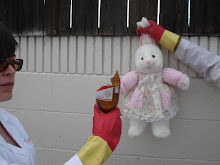However funny this may be, I have to do some biology for my work as an oceanographer. The bulk of ocean chemistry depends on what is going on in the biological realm, so I have to keep track of a few species of sea-faring critters. The three I am most familiar with are Diatoms, Coccolithophores, and Forams. Today we’ll look at the wonderful world of the Diatom.

Diatoms are the guys I like the best because they are the main players in the Silica cycle. They are phytoplankton (plants) that have a siliceous shell encasing them called a frustule or test. The ones I deal with live in the photic zone, which tends to be the upper 100m of water depending on how murky your water is. Diatoms can grow CRAZY fast. The majority of the time they multiply vegetativly meaning that one diatom will break into two smaller diatoms. Individuals have the ability to make a new shell in 10-20 minutes! They’re big fans of regions with high nutrients like upwelling zones and the Southern Ocean. Wherever and whenever there is a high concentration of nutrients in the water, diatoms will hit hard and fast. They’ll zoom in and use up all the nutrients, creating what is referred to as a “bloom”, and then die off quickly when the nutrient supply has been drained.
It’s not totally obvious why a plant would want to grow a siliceous frustule. There are a few theories to explain why this might happen:
1.) To serve as a UV filter. UV light is super bad for you when you are a tiny phytoplankton.
2.) To act as armor to protect them from other critters that graze on them (this is probably the most likely explanation).
3.) To act as ballast so they can float up and down in the water column.
4.) Because they want to, motherfucker.
The majority (70-80%) of the silica that diatoms take up to make their frustules gets recycled in the surface waters. Some of it makes its way down into the seafloor where it gets deposited. People like me go out and collect seafloor sediments in interesting locations in order to find out how much silica has made it to the seafloor and what (if any) implications that may have to the water chemistry in the region.
Diatoms are one of the few living creatures that are ok in my book. Make a diatom YOUR friend today!
References:
http://www.reef.edu.au/asp_pages/secb.asp?FormNo=7
Douglas (2006) Biogenic Sediments: Carbonate and Silica
Photo credit: Dr. Neil Sullivan, University of Southern Calif.


1 comment:
i say that if you propose a hypothesis on why a plant would want to grow a siliceous frustule that it should be 4.) Because they want to, motherfucker.
now THAT would be a hella breakthrough in the science world, no?
Post a Comment